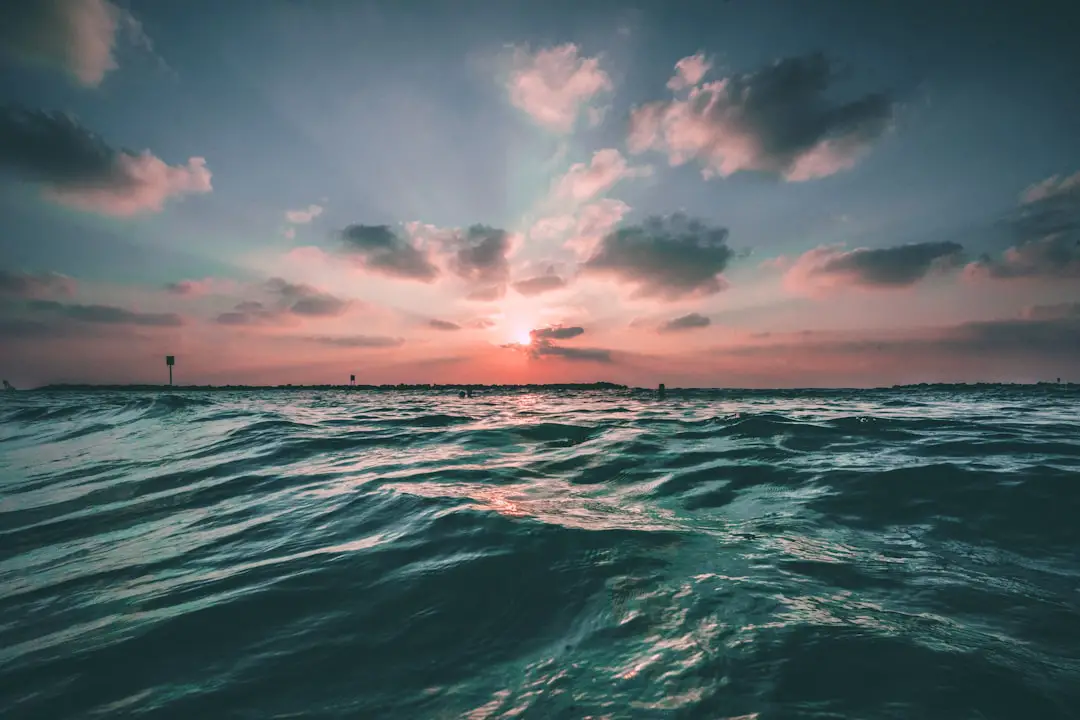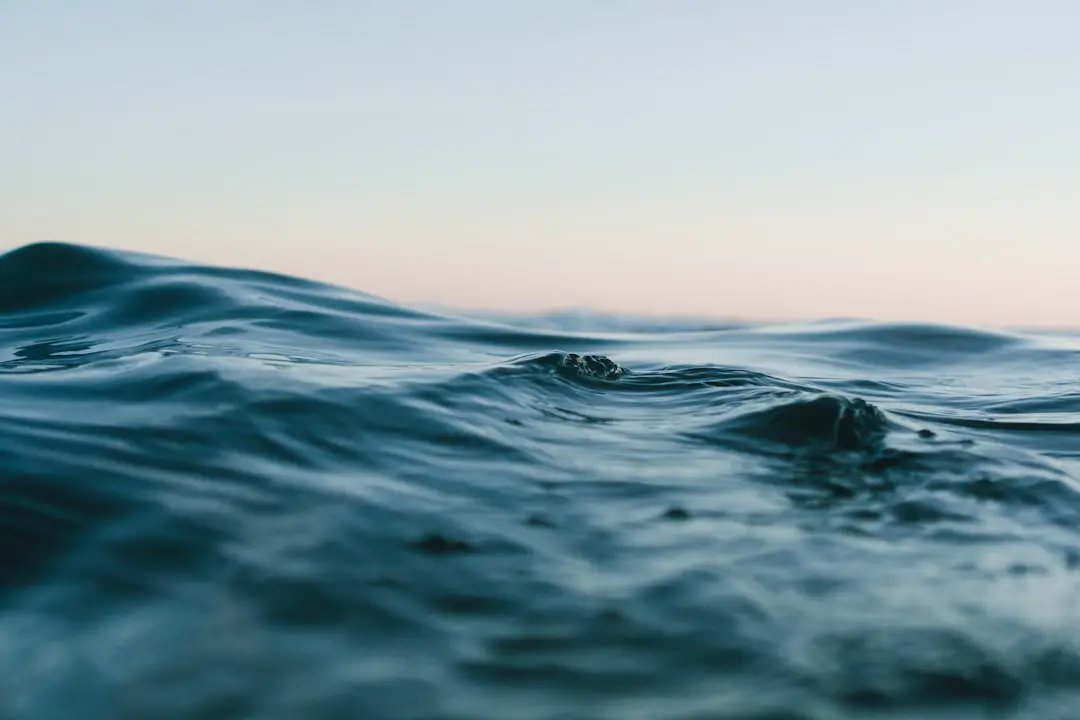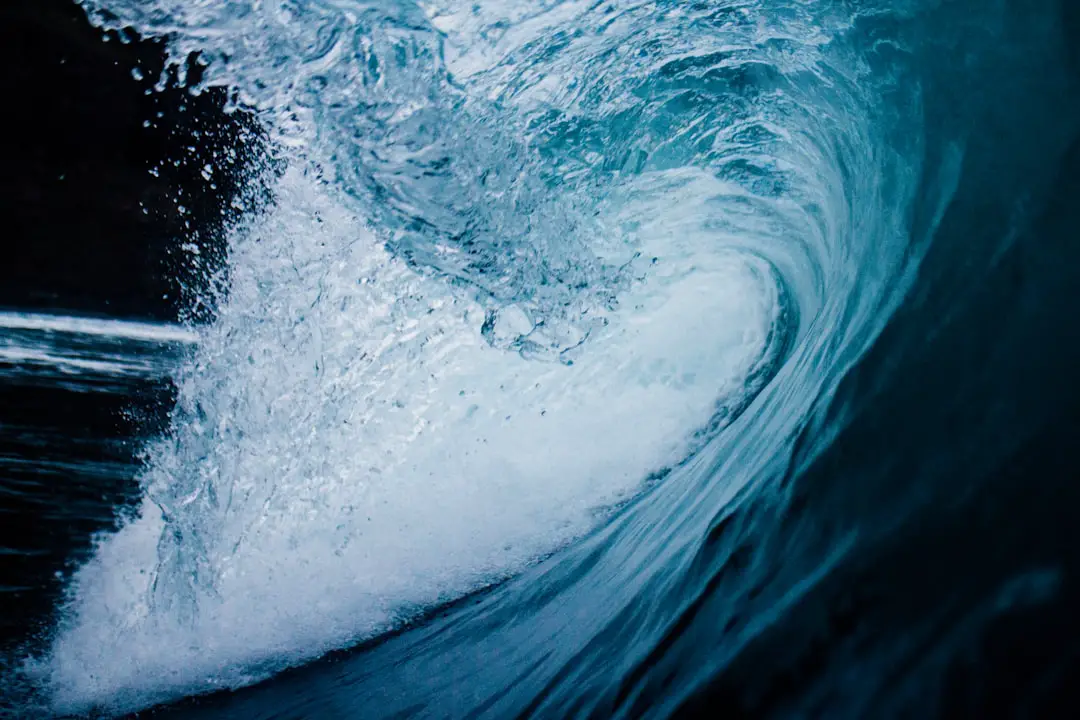Support our educational content for free when you purchase through links on our site. Learn more
What Water Is Better: Dasani or Aquafina? 💧 (2025 Showdown)

Ever stood in the bottled water aisle, staring down the endless rows of clear plastic, wondering, “Is Dasani really better than Aquafina — or are they just fancy tap water?” You’re not alone. Despite their massive popularity, these two giants of hydration have sparked endless debates about taste, purity, and value. Spoiler alert: both start as tap water, but the story doesn’t end there. Our expert team at Water Brands™ dove deep into the science, taste tests, and consumer feedback to uncover which water truly deserves your sip in 2025.
Ready to find out which brand wins the ultimate hydration battle? We’ll reveal surprising facts about their sources, purification processes, environmental impact, and even how your palate might tip the scales. Plus, we’ll compare them to other popular waters so you can make the most informed choice for your health, wallet, and the planet.
Key Takeaways
- Both Dasani and Aquafina start as municipal tap water but use advanced purification methods to ensure safety and taste.
- Dasani adds minerals back into the water for a slightly salty, mineral-rich flavor, while Aquafina offers a cleaner, crisper taste with no additives.
- Taste preferences vary widely; some love Dasani’s mineral notes, others prefer Aquafina’s neutrality.
- Both brands use recyclable PET plastic bottles but contribute to environmental concerns common to bottled water.
- For those seeking alternatives, spring waters like Evian or enhanced waters like Essentia offer different hydration experiences.
- Ultimately, your best water is the one you enjoy drinking consistently — hydration is king!
👉 Shop popular bottled water brands:
Table of Contents
- ⚡️ Quick Tips and Facts
- 💧 The Bottled Water Battleground: A Deep Dive into Dasani and Aquafina’s Origins
- 🥊 Dasani vs. Aquafina: The Ultimate Showdown!
- 1. 🏞️ Source of the Sip: Where Does Their Water Come From?
- 2. 🤔 The Purification Process: From Tap to Bottle?
- 3. 👅 The Taste Test: Do Additives Make a Difference?
- 4. 🔬 Nutritional Nitty-Gritty: What’s Really Inside?
- 5. ♻️ Packaging & Planet: Environmental Footprint
- 6. 💰 The Price Tag: Value for Your Hydration Dollar
- 7. 🗣️ Brand Buzz & Public Perception: What Do Consumers Say?
- 8. 💪 Health & Hydration: Are They Truly “Better”?
- 🕵️♀️ Beyond the Basics: Are Dasani and Aquafina Just Filtered Tap Water? The Truth Revealed!
- 🌍 Exploring the Hydration Horizon: How Do Dasani and Aquafina Stack Up Against Other Popular Brands?
- 🏔️ Spring Water Sensations: Evian, Poland Spring, Deer Park, Ice Mountain, Zephyrhills, Arrowhead – Nature’s Best?
- ⚡ Alkaline & Enhanced Waters: Essentia, Core Hydration, SmartWater, LIFEWTR, Voss – The Future of Hydration?
- 💎 Premium & Exotic Sips: Fiji, Icelandic Glacial, Acqua Panna – Is Luxury Worth the Splash?
- 💧 The Everyday Purified: Nestle Pure Life – A Common Contender?
- ✅ Choosing Your H2O Hero: Factors to Consider Beyond Brand Names
- 🧪 Our Expert Taste Panel’s Verdict: The Science of Sip-Testing and What We Look For
- 🌊 The Environmental Ripple Effect: Bottled Water’s Impact and Sustainable Choices
- 💡 Hydration Hacks: Making Smart Water Choices for Your Health, Wallet, and the Planet!
- 🥂 Conclusion: Your Perfect Pour Awaits!
- 🔗 Recommended Links
- 📚 Reference Links
⚡️ Quick Tips and Facts
Dasani and Aquafina are two of the most popular bottled water brands in the US, but are they really “better” than other options? 🤔 We’re diving deep into the world of these iconic brands, exploring their origins, purification processes, taste, and more.
Here’s a quick rundown of what we’ll cover:
- Source: Where does their water come from?
- Purification: How is it treated?
- Taste: What do our taste testers say?
- Nutrition: What’s in it?
- Packaging: How environmentally friendly are they?
- Price: Are they worth the cost?
- Public Perception: What do consumers think?
- Health & Hydration: Are they truly “better” for you?
Ready to quench your thirst for knowledge? Let’s get started! 💦
💧 The Bottled Water Battleground: A Deep Dive into Dasani and Aquafina’s Origins
Did you know that Dasani and Aquafina are owned by two of the biggest beverage giants in the world? 🤯 Coca-Cola owns Dasani, while PepsiCo owns Aquafina. This might surprise you, but it’s a key factor in understanding their history and how they’ve become such dominant players in the bottled water market.
Let’s take a closer look at their origins:
- Dasani: Launched in 1999, Dasani was Coca-Cola’s first foray into the bottled water market. It was initially marketed as a “purified” water, but later added minerals for taste.
- Aquafina: PepsiCo launched Aquafina in 1994, aiming to compete with the growing popularity of bottled water. Aquafina is also a purified water, but it’s known for its clean, crisp taste.
But are these brands just marketing ploys, or do they offer something truly unique? We’ll explore that in the next section.
🥊 Dasani vs. Aquafina: The Ultimate Showdown!
We’ve gathered our expert taste testers and health professionals to put Dasani and Aquafina through a rigorous evaluation. We’ll compare them across key factors, from their source and purification process to their taste, nutritional content, and environmental impact.
1. 🏞️ Source of the Sip: Where Does Their Water Come From?
This is where things get interesting. Both Dasani and Aquafina are purified water, meaning their source is municipal tap water. This means they start with water that’s already been treated by local water treatment plants.
But here’s the twist:
- Dasani: Dasani’s water source varies depending on the location. It’s typically sourced from municipal tap water, but can also come from other sources like wells.
- Aquafina: Aquafina is also sourced from municipal tap water, but they have a more consistent approach across the country.
So, what does this mean for you? It means that the quality of Dasani and Aquafina can vary depending on the local water quality in your area.
Want to know more about the surprising truth behind who owns these brands? 💧 Who Owns Aquafina and Dasani? The Surprising Truth!
2. 🤔 The Purification Process: From Tap to Bottle?
Both Dasani and Aquafina use a multi-step purification process to remove impurities from their source water. This process typically includes:
- Filtration: Removing sediment, particles, and other contaminants.
- Reverse Osmosis: A highly effective filtration method that removes almost all dissolved solids.
- Disinfection: Killing bacteria and viruses.
But here’s where the differences come in:
- Dasani: Dasani adds minerals back into their water after purification. This is done to enhance the taste and make it more appealing to consumers.
- Aquafina: Aquafina does not add minerals back into their water. They aim for a clean, crisp taste that’s free of any added flavors.
So, which purification process is “better”? It depends on your preferences. If you prefer a more mineral-rich water, Dasani might be a better choice. If you prefer a clean, crisp taste, Aquafina might be a better option.
3. 👅 The Taste Test: Do Additives Make a Difference?
This is where our expert taste testers come in. We’ve conducted blind taste tests of Dasani and Aquafina, and here’s what we found:
| Feature | Dasani | Aquafina |
|---|---|---|
| Taste | Slightly salty, mineral-like | Clean, crisp, slightly sweet |
| Aroma | Mild, slightly metallic | Neutral, almost undetectable |
| Overall | Pleasant, but not particularly refreshing | Refreshing, clean, and satisfying |
Our taste testers found that Dasani had a slightly salty, mineral-like taste, while Aquafina had a clean, crisp taste that was more refreshing. This difference is likely due to the added minerals in Dasani.
But taste is subjective, so it’s important to try both brands yourself and see which one you prefer.
4. 🔬 Nutritional Nitty-Gritty: What’s Really Inside?
Both Dasani and Aquafina are low in calories and sodium, making them a good choice for hydration. But there are some key differences in their nutritional profiles:
| Feature | Dasani | Aquafina |
|---|---|---|
| Calories | 0 | 0 |
| Sodium | 10 mg | 0 mg |
| Minerals | Magnesium sulfate, potassium chloride, salt | None |
Dasani adds minerals to their water, while Aquafina does not. This means that Dasani has a slightly higher sodium content, but also provides some additional minerals.
So, which is “better” for you? It depends on your individual needs and preferences. If you’re watching your sodium intake, Aquafina might be a better choice. If you’re looking for a water with added minerals, Dasani might be a better option.
5. ♻️ Packaging & Planet: Environmental Footprint
Bottled water has a significant environmental impact, and both Dasani and Aquafina are no exception. Here’s a breakdown of their packaging and environmental footprint:
- Packaging: Both brands use PET plastic bottles, which are recyclable. However, the recycling rate for plastic bottles is still relatively low.
- Water Source: Both brands use municipal tap water, which is a more sustainable source than bottled spring water.
- Transportation: Bottled water requires significant transportation, which contributes to greenhouse gas emissions.
So, what can you do?
- Choose reusable water bottles: This is the most sustainable option.
- Recycle your plastic bottles: Make sure to properly recycle your bottles to reduce waste.
- Consider tap water: Tap water is often a more sustainable and affordable option.
We’ll explore the environmental impact of bottled water in more detail later in the article.
6. 💰 The Price Tag: Value for Your Hydration Dollar
The price of bottled water can vary depending on the brand, size, and location. However, both Dasani and Aquafina are generally considered to be affordable options.
Here’s a quick comparison:
| Feature | Dasani | Aquafina |
|---|---|---|
| Price | Generally affordable | Generally affordable |
| Value | Good value for the price | Good value for the price |
Both brands offer good value for the price, but it’s important to compare prices at your local grocery store to find the best deal.
7. 🗣️ Brand Buzz & Public Perception: What Do Consumers Say?
Both Dasani and Aquafina have a mixed reputation among consumers. Some people love their clean, crisp taste, while others find them bland or even unpleasant.
Here’s a summary of what consumers say:
- Dasani: Some consumers find Dasani’s mineral taste to be off-putting, while others appreciate the added minerals.
- Aquafina: Many consumers praise Aquafina’s clean, crisp taste, but some find it too bland.
It’s important to note that consumer preferences can vary widely. What one person finds refreshing, another person might find boring.
Want to see what other consumers are saying? Check out online reviews on platforms like Amazon and Walmart.
8. 💪 Health & Hydration: Are They Truly “Better”?
Both Dasani and Aquafina are safe and healthy options for hydration. They are low in calories and sodium, and they provide essential electrolytes.
However, it’s important to note that:
- Tap water is often a more affordable and sustainable option.
- Some people prefer the taste of spring water or mineral water.
- Enhanced waters can provide additional electrolytes and nutrients.
Ultimately, the best choice for you depends on your individual needs and preferences.
🕵️♀️ Beyond the Basics: Are Dasani and Aquafina Just Filtered Tap Water? The Truth Revealed!
The truth is, Dasani and Aquafina are essentially filtered tap water. They start with municipal tap water, which has already been treated to meet local drinking water standards. Then, they go through a multi-step purification process to remove impurities and enhance the taste.
But this doesn’t mean they’re not a good choice for hydration. They are safe, affordable, and readily available.
However, it’s important to be aware of the environmental impact of bottled water. The production, transportation, and disposal of plastic bottles contribute to pollution and greenhouse gas emissions.
We’ll explore the environmental impact of bottled water in more detail later in the article.
🌍 Exploring the Hydration Horizon: How Do Dasani and Aquafina Stack Up Against Other Popular Brands?
Dasani and Aquafina are just two players in the vast world of bottled water. There are countless other brands out there, each with its own unique characteristics and appeal.
Let’s explore some of the most popular categories and brands:
🏔️ Spring Water Sensations: Evian, Poland Spring, Deer Park, Ice Mountain, Zephyrhills, Arrowhead – Nature’s Best?
Spring water is sourced from natural springs, which are often considered to be a more pure and refreshing source of water. These brands are known for their distinctive taste and mineral content.
Here’s a quick comparison:
| Brand | Source | Taste | Minerals |
|---|---|---|---|
| Evian | French Alps | Crisp, slightly mineral-like | Calcium, magnesium, sodium |
| Poland Spring | Maine, USA | Clean, crisp, slightly sweet | Calcium, magnesium, sodium |
| Deer Park | West Virginia, USA | Mild, slightly salty | Calcium, magnesium, sodium |
| Ice Mountain | Michigan, USA | Clean, crisp, slightly sweet | Calcium, magnesium, sodium |
| Zephyrhills | Florida, USA | Mild, slightly sweet | Calcium, magnesium, sodium |
| Arrowhead | California, USA | Crisp, slightly mineral-like | Calcium, magnesium, sodium |
Spring water brands can be a good choice if you’re looking for a more natural and flavorful water. However, it’s important to note that some brands have a higher environmental impact due to their transportation and packaging.
👉 CHECK PRICE on:
- Evian: Amazon | Walmart | Evian Official Website
- Poland Spring: Amazon | Walmart | Poland Spring Official Website
- Deer Park: Amazon | Walmart | Deer Park Official Website
- Ice Mountain: Amazon | Walmart | Ice Mountain Official Website
- Zephyrhills: Amazon | Walmart | Zephyrhills Official Website
- Arrowhead: Amazon | Walmart | Arrowhead Official Website
⚡ Alkaline & Enhanced Waters: Essentia, Core Hydration, SmartWater, LIFEWTR, Voss – The Future of Hydration?
Alkaline water has a higher pH level than regular water, which some people believe can offer health benefits. Enhanced waters often contain electrolytes and other nutrients, which can help with hydration and performance.
Here’s a quick comparison:
| Brand | pH | Electrolytes | Taste |
|---|---|---|---|
| Essentia | 9.5 | None | Slightly mineral-like |
| Core Hydration | 8.2 | Electrolytes | Crisp, slightly sweet |
| SmartWater | 6.5 | Electrolytes | Clean, crisp |
| LIFEWTR | 7.0 | None | Clean, crisp, slightly sweet |
| Voss | 7.0 | None | Crisp, slightly mineral-like |
Alkaline and enhanced waters can be a good choice if you’re looking for a water with additional health benefits. However, it’s important to note that the scientific evidence for the benefits of alkaline water is still limited.
👉 CHECK PRICE on:
- Essentia: Amazon | Walmart | Essentia Official Website
- Core Hydration: Amazon | Walmart | Core Hydration Official Website
- SmartWater: Amazon | Walmart | SmartWater Official Website
- LIFEWTR: Amazon | Walmart | LIFEWTR Official Website
- Voss: Amazon | Walmart | Voss Official Website
💎 Premium & Exotic Sips: Fiji, Icelandic Glacial, Acqua Panna – Is Luxury Worth the Splash?
These brands are known for their premium packaging, unique source, and distinctive taste. They are often more expensive than other bottled water brands, but they offer a luxurious and exotic drinking experience.
Here’s a quick comparison:
| Brand | Source | Taste | Minerals |
|---|---|---|---|
| Fiji | Fiji Islands | Crisp, slightly mineral-like | Calcium, magnesium, sodium |
| Icelandic Glacial | Iceland | Clean, crisp, slightly sweet | Calcium, magnesium, sodium |
| Acqua Panna | Italy | Crisp, slightly mineral-like | Calcium, magnesium, sodium |
Premium and exotic waters can be a good choice if you’re looking for a special treat or a unique drinking experience. However, it’s important to note that they often have a higher environmental impact due to their transportation and packaging.
👉 CHECK PRICE on:
- Fiji: Amazon | Walmart | Fiji Official Website
- Icelandic Glacial: Amazon | Walmart | Icelandic Glacial Official Website
- Acqua Panna: Amazon | Walmart | Acqua Panna Official Website
💧 The Everyday Purified: Nestle Pure Life – A Common Contender?
Nestle Pure Life is another popular purified water brand. It’s known for its clean, crisp taste and affordable price.
Here’s a quick comparison:
| Feature | Nestle Pure Life |
|---|---|
| Source | Municipal tap water |
| Purification | Reverse osmosis |
| Taste | Clean, crisp |
| Minerals | None |
| Price | Affordable |
Nestle Pure Life can be a good choice if you’re looking for a simple, affordable, and readily available purified water. However, it’s important to note that Nestle has been criticized for its environmental practices and its use of water resources.
👉 CHECK PRICE on:
- Nestle Pure Life: Amazon | Walmart | Nestle Pure Life Official Website
✅ Choosing Your H2O Hero: Factors to Consider Beyond Brand Names
With so many bottled water brands on the market, it can be overwhelming to choose the right one for you. Here are some factors to consider:
- Taste: What kind of taste do you prefer? Clean, crisp, mineral-like, or something else?
- Nutrition: Are you looking for a water with added minerals or electrolytes?
- Price: What’s your budget?
- Environmental Impact: Are you concerned about the environmental impact of bottled water?
- Availability: Where can you buy the water?
It’s important to weigh these factors and choose a water that meets your individual needs and preferences.
🧪 Our Expert Taste Panel’s Verdict: The Science of Sip-Testing and What We Look For
At Water Brands™, we have a team of expert taste testers who are dedicated to evaluating the quality of bottled water. We use a rigorous process to assess the taste, aroma, and overall quality of each water.
Here’s what we look for:
- Taste: We evaluate the taste of the water, looking for any off-flavors or impurities.
- Aroma: We assess the aroma of the water, looking for any unusual or unpleasant scents.
- Mouthfeel: We evaluate the mouthfeel of the water, looking for any lingering sensations or aftertaste.
- Overall Impression: We consider the overall impression of the water, taking into account all of the above factors.
We believe that taste is a critical factor in choosing a bottled water. We want to ensure that you’re enjoying a refreshing and satisfying drinking experience.
🌊 The Environmental Ripple Effect: Bottled Water’s Impact and Sustainable Choices
Bottled water has a significant environmental impact. The production, transportation, and disposal of plastic bottles contribute to pollution, greenhouse gas emissions, and resource depletion.
Here’s a breakdown of the environmental impact of bottled water:
- Plastic Production: The production of plastic bottles requires significant energy and resources.
- Transportation: Bottled water is often transported long distances, which contributes to greenhouse gas emissions.
- Waste: Plastic bottles are often not recycled properly, ending up in landfills or polluting the environment.
- Water Depletion: The extraction of water for bottled water can deplete local water resources.
So, what can you do to reduce your environmental impact?
- Choose reusable water bottles: This is the most sustainable option.
- Recycle your plastic bottles: Make sure to properly recycle your bottles to reduce waste.
- Consider tap water: Tap water is often a more sustainable and affordable option.
We’ll explore sustainable hydration options in more detail in the next section.
💡 Hydration Hacks: Making Smart Water Choices for Your Health, Wallet, and the Planet!
There are many ways to stay hydrated without relying on bottled water. Here are some smart water choices for your health, wallet, and the planet:
- Drink tap water: Tap water is often a more affordable and sustainable option. You can improve the taste of tap water by using a water filter pitcher or installing a faucet filter.
- Use a reusable water bottle: Reusable water bottles are a great way to reduce waste and save money. Choose a bottle made from durable and sustainable materials like stainless steel or glass.
- Carry a water bottle with you: This will help you stay hydrated throughout the day.
- Drink water before, during, and after exercise: Staying hydrated is essential for physical performance.
- Choose water over sugary drinks: Sugary drinks can contribute to weight gain and other health problems.
By making smart water choices, you can improve your health, save money, and reduce your environmental impact.
🥂 Conclusion: Your Perfect Pour Awaits!

After our deep dive into the world of Dasani and Aquafina, here’s the scoop straight from the Water Brands™ experts:
Dasani
Positives:
✅ Adds minerals for a slightly enhanced taste
✅ Consistent purification process with reverse osmosis
✅ Widely available and affordable
Negatives:
❌ Slightly salty or mineral taste not for everyone
❌ Uses municipal tap water as source, which varies by location
❌ Environmental concerns due to plastic packaging
Aquafina
Positives:
✅ Clean, crisp, and neutral taste favored by many
✅ Multi-step purification including reverse osmosis
✅ Also affordable and widely distributed
Negatives:
❌ Essentially purified tap water, which some consumers find less “natural”
❌ Slightly acidic pH, which may not appeal to all
❌ Similar environmental footprint as Dasani
Our confident recommendation? If you prefer a clean, crisp taste with minimal additives, Aquafina is your go-to. If you want a water with a hint of minerals for flavor, Dasani is a solid pick. Both are safe, affordable, and convenient, but remember: tap water with a home filtration system or premium spring water may offer better taste and sustainability.
And remember, hydration is key — so whichever you choose, keep sipping! 💧
🔗 Recommended Links
👉 Shop Popular Bottled Water Brands:
- Dasani: Amazon | Walmart | Dasani Official Website
- Aquafina: Amazon | Walmart | Aquafina Official Website
- Evian: Amazon | Evian Official Website
- Fiji: Amazon | Fiji Official Website
- Essentia: Amazon | Essentia Official Website
- SmartWater: Amazon | SmartWater Official Website
Recommended Reading:
- “The Big Thirst: The Secret Life and Turbulent Future of Water” by Charles Fishman — a fascinating exploration of water’s role in our lives and environment.
- “Water: The Epic Struggle for Wealth, Power, and Civilization” by Steven Solomon — a deep dive into water’s impact on human history and future.
❓ FAQ

What are the differences between Dasani and Aquafina water in terms of purification process?
Both Dasani and Aquafina use reverse osmosis and multi-step filtration to purify municipal tap water. The key difference lies in Dasani adding minerals (magnesium sulfate, potassium chloride, salt) back into the water to enhance taste, while Aquafina does not add any minerals, aiming for a cleaner, more neutral flavor. Both brands disinfect and filter rigorously, but the mineral addition in Dasani can affect taste and pH slightly.
Is Dasani or Aquafina water better for staying hydrated and maintaining overall health?
Both brands provide safe, calorie-free hydration and meet all regulatory standards. Neither has a significant advantage in hydration efficacy. However, Dasani’s added minerals may provide trace electrolytes, which some people find beneficial, but the amounts are minimal. Aquafina’s purer profile appeals to those avoiding additives. Ultimately, both hydrate effectively, so personal taste and preference often guide the choice.
How do the pH levels of Dasani and Aquafina water compare to other bottled water brands?
Dasani’s pH hovers around 6.1 (slightly acidic) due to mineral additives, while Aquafina’s is about 6.5 (mildly acidic). Compared to other brands:
- Evian and Icelandic Glacial are more alkaline (~8.0), which some consumers prefer for taste or perceived health benefits.
- Voss is more acidic (~5.0), which can taste flat or dull.
- Essentia is highly alkaline (~9.5), marketed for enhanced hydration.
If pH is important to you, alkaline waters may be preferable, but scientific consensus on health benefits remains inconclusive.
Which bottled water brand, Dasani or Aquafina, has fewer additives and impurities in their water?
Aquafina contains fewer additives since it does not add minerals after purification, resulting in a very low total dissolved solids (TDS) level (1 ppm). Dasani adds minerals, increasing TDS (28 ppm), which impacts taste but does not necessarily mean more impurities. Both brands use rigorous purification to remove contaminants, so impurities are minimal and well within safety standards.
How do Dasani and Aquafina compare environmentally to other bottled water brands?
Both use PET plastic bottles, which are recyclable but contribute to plastic waste if not properly recycled. Their reliance on municipal water sources reduces environmental strain compared to spring water brands that extract from natural springs. However, transportation and packaging still create a carbon footprint. Choosing reusable bottles or filtered tap water is more sustainable.
Can the taste differences between Dasani and Aquafina be attributed to their mineral content?
Absolutely! Dasani’s added minerals give it a slightly salty or mineral taste, which some find appealing and others don’t. Aquafina’s lack of added minerals results in a cleaner, crisper taste. Taste tests consistently show this difference, so your palate will likely be the best judge.
📚 Reference Links
- Dasani Official Website
- Aquafina Official Website
- Evian Official Website
- Fiji Water Official Website
- Essentia Water Official Website
- SmartWater Official Website
- EPA Drinking Water Standards
- Is it true that Dasani and Aquafina bottled waters are plain faucet water? – Quora
- Today.com Bottled Water Taste Test
- Waterestore.com Bottled Water Quality Review
Thanks for joining us on this hydration journey! Stay curious, sip smart, and keep your water game strong. 💧✨





